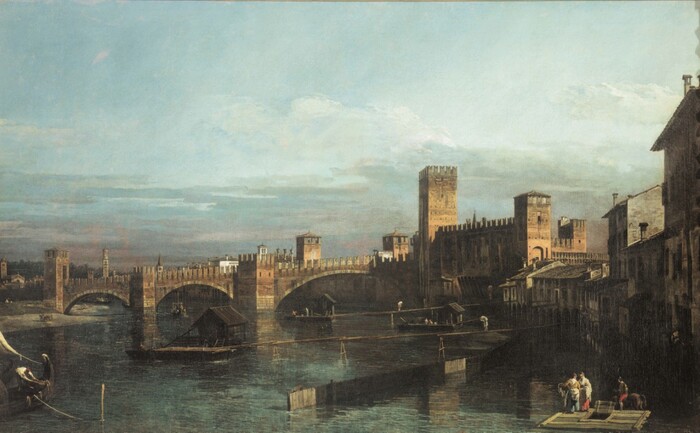VICENZA - For Titian, Hades does not have the appearance of a burning city as it was usually depicted, but in the Orfeo e Euridice painted around 1510 it takes the form of a blast furnace flanked by water wheels that operate its bellows, similar to those who were familiar to him in the area of Pieve di Cadore, his native town.
The work of the master of painting stands out in one of the rich rooms of the Palladio Museum in Vicenza, among an enormous allegory by Francesco Bassano, parchments, reproductions of models, work tools and pieces of fine craftsmanship to tell the importance of the fire of the furnaces and forges to produce bricks, coal wood or melt metals.
To the ferment of energies and ideas that made
hinterland of the Republic of the Doges the scenario of an unparalleled entrepreneurial miracle is dedicated to the exhibition 'Water, Earth, Fire.
Industrial architecture in the Veneto of the Renaissance ', running until 12 March.
The three elements, therefore, unfold in a well thought-out setting as a key to interpreting an economic development that had its sector of excellence in silk.
Precisely for this reason when ten years ago the Palladio Museum opened its doors in the courtyard a mulberry tree was planted.
"Without the wealth produced by the silk factories and factories of the North-East of five centuries ago, Andrea Palladio could not have created villas and palaces that are now the object of universal admiration", observes the director Guido Beltramini.
The curator Deborah Howard, the greatest specialist in Venetian architecture at St. John's College in Cambridge, was inspired by the boom in patents for machinery and gears (Venice in 1474 was the first to regulate the protection of inventions with a law).
From 126 in the first half of the sixteenth century they rose to 486 in the second half of the century.
"I wanted to demonstrate - explains the scholar - that in that period there was a sort of industrial revolution because the number of new inventions is almost equal to that recorded at the end of the eighteenth century during what is considered the real revolution. And I started to look for the places where these activities took place in the late Renaissance because almost nothing is known about them. It is the period that coincides with Palladio's maturity ".
it was a sort of industrial revolution because the number of new inventions is almost equal to that recorded at the end of the eighteenth century during what is considered the real revolution.
And I started looking for the places where these activities took place in the late Renaissance because almost nothing is known about them.
It is the period that coincides with Palladio's maturity ".
it was a sort of industrial revolution because the number of new inventions is almost equal to that recorded at the end of the eighteenth century during what is considered the real revolution.
And I started looking for the places where these activities took place in the late Renaissance because almost nothing is known about them.
It is the period that coincides with Palladio's maturity ".
In this sense, with the network of rivers in the area, water has played a decisive role for a 'green' energy to be used in the movement of mills and machines for the proto-industrial processing of flour, leather, paper, wood, metals. , wool and fabrics.
Next to the floating mills of Verona by Bernardo Bellotto in 1745 there is the 'Angelic Plan' of Vicenza designed in 1580 by Giovanni Battista Pittoni in which the water wheels of the factories and the tall silk mills stand out near the bridges over the waterways.
The city, in the mid-sixteenth century, produced more than 40 percent of all the raw silk in the world with a hundred hydraulic systems for its twisting and exported throughout Europe between 18 and 20 tons per year between raw and semi-finished product.
A period of
Silk continued to be produced in Veneto until the end of the Second World War, when the last spinning mills were closed.
In the room dedicated to the earth, objects and drawings illustrate the working of silver and kaolin for the production of ceramics.
But there is also room for the white pebbles of the Brenta river that were pulverized for industrial use.
"The noble families who traded in silk - the curators observe - bet on an art that was contemporary, in terms of innovation and the ability to look to the future. Cultured and cosmopolitan, they decided together to use the wealth of the city to transform it from a small provincial center. into something bigger ".
A bet that also shaped public buildings and noble residences.
Palladio followed the discontinuity with respect to tradition.

